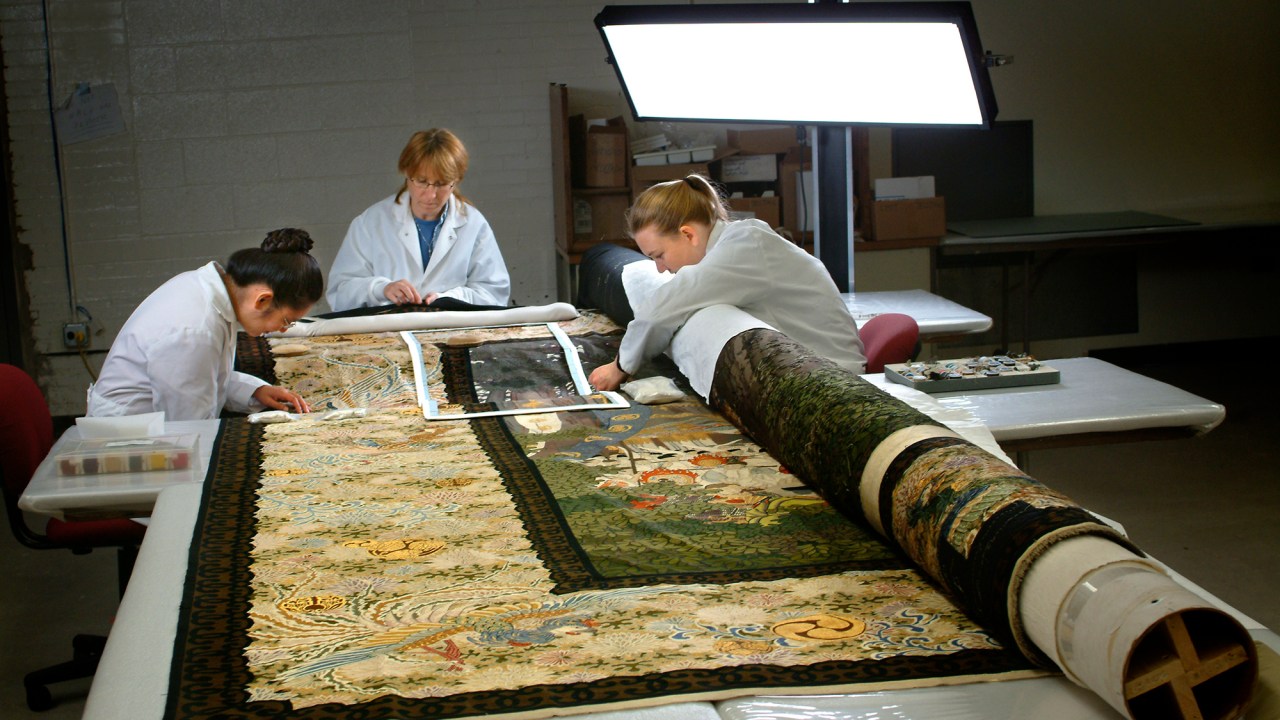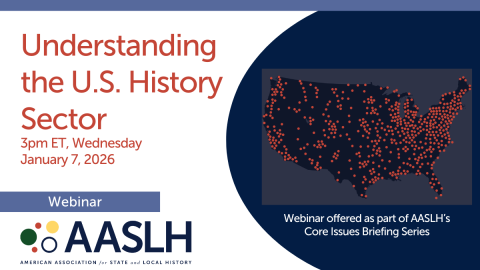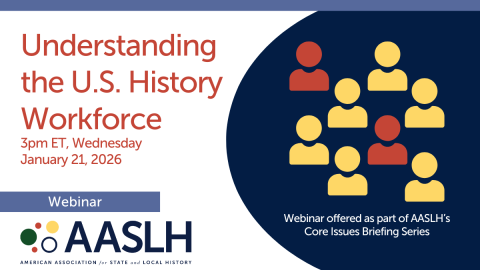
As lawyers with backgrounds in horticulture (Lori) and material culture studies (Sarah), we never thought we would be passionate about an accounting rule. Yet here we are.
In 2015 we wrote a white paper suggesting a revision to an accounting standard; this year, that change is being adopted. After twenty-five years, the Financial Accounting Standards Board (FASB) has realigned its position on the use of deaccession proceeds with that of the American Alliance of Museums (AAM): now, museums may choose to use proceeds from the sale of deaccessioned collections items for acquisition or direct care without the threat of a qualified financial audit or needing to capitalize their collections.
What is FASB and why should I care?
FASB establishes financial accounting and reporting standards that most companies and not-for-profit organizations use to keep and evaluate financial records, i.e., Generally Accepted Accounting Principles (GAAP). While FASB does not take enforcement action and a GAAP violation is not necessarily a legal violation, deviation from these rules can cause an auditor to issue a qualified audit report, which may threaten a museum’s financial health by compromising its eligibility for competitive grants, damaging its credit rating, or violating the terms of its bonds.
AAM and FASB—misaligned for twenty-five years
Since 1993, AAM’s Code of Ethics for Museums has allowed proceeds from the sale of collections to be used for both acquisition and direct care. However, experts in the field have cautioned museums against using such funds for direct care, citing fears of a qualified financial audit. The basis for this caution is a FASB accounting standard that seems to limit the use of deaccession proceeds to acquisitions.
This divergence between AAM and FASB grew out of a historical accident. FASB promulgated its standard in 1993, relying specifically on the then-current 1991 AAM Code of Ethics, which restricted the use of deaccession proceeds to new acquisitions. However, in response to strong push back from the museum community, AAM modified its Code of Ethics in 1994 to allow deaccession proceeds to also be used for direct care. It is impossible to determine whether FASB’s standard would have been different if the 1991 Code of Ethics allowed for direct care, but, had FASB promulgated its rule after AAM’s update, FASB’s discussions may have gone differently. Regardless, this accounting standard was not updated after its original publication and has remained misaligned with AAM for the last twenty-five years.
The accounting standard in question provides conditions distinguishing collections items used for public service, which need not be capitalized, from assets held for financial gain, which must be capitalized. Under the original standard, collections items are those (a) held in furtherance of public service; (b) kept unencumbered (e.g., not used as collateral for a loan), cared for, and preserved; and (c) “subject to an organizational policy that requires proceeds of items that are sold to be used to acquire other items for collections.” A strict reading of provision (c) would require museums that use deaccession proceeds for direct care to capitalize their collections, that is, record the value of each collections item as an asset on the museum’s balance sheet. While some have argued in favor of capitalizing museum collections, most museums do not view their collections as assets, finding capitalization ethically objectionable as well as logistically impractical (for instance, the Field Museum holds nearly 40 million collections objects, most of which— fish in jars, pressed plants, endangered species—have tremendous scientific importance, but unascertainable monetary value).
However, direct care is consistent with FASB’s overall purpose: it encourages reinvestment in and maintenance of existing collections as an alternative and compliment to collections growth, ensuring that items remain preserved and cared for in furtherance of public service. Moreover, many museums, including the Field Museum, do not capitalize their collections, have policies allowing for direct care, and have never received a qualified audit.
Given this divergence between FASB, AAM, and common practice, we saw an opportunity to clarify this rule.
AAM and FASB—together again
Our modest proposal to add five words (literally: “only for direct care or”) to FASB’s definition of collections took many years to accomplish and involved the concerted effort of several individuals. Lori discovered the misalignment between AAM and FASB in 2013 while preparing a talk for a legal conference. She brought her concerns to the Field Museum’s CFO, Jim Croft, who was equally perplexed as, for many years, the Field Museum’s Board-approved collections policy had allowed proceeds from the sale of collections to be used for acquisition or direct care; the Museum had never received a qualified financial audit, nor was the museum’s auditor aware of any other museums who had due to this rule.
Intrigued by this inconsistency, we explored this issue further, looking into the history of the standard, speaking to anyone we could find who was interested (or politely tolerant of our nerdiness), and co-wrote a paper, which was presented at the 2016 Legal Issues in Museum Administration conference and later published in Is it OK to Sell the Monet? The Age of Deaccessioning in Museums.
When Jim Croft retired from the Field Museum after more than 30 years of service, he was invited to join FASB’s Not-for-Profit Advisory Committee (NAC), and he presented this issue to the NAC for its consideration. The project was taken up by the NAC, and Richard Cole, NAC Supervising Project Manager, formally presented the issue to FASB in 2016. FASB issued an exposure draft in June 2018 seeking comments on the proposed revision. The NAC also solicited input from a small working group comprised of museum professionals and accountants to develop a possible definition of direct care. Although the working group recommended a definition that closely tracked the definition in AAM’s April 2016 Direct Care of Collections: Ethics, Guidance and Recommendations, FASB ultimately decided to not include its own definition of direct care, in part to avoid the risk of becoming misaligned with AAM yet again.
At its December 19, 2018 meeting, FASB affirmed its decision to update its definition of collections to include the concept of direct care and as of March 21, 2019, FASB has issued the revised definition in its Accounting Standards Codification.
What does this mean for museums?
This change means greater clarity and consistency for museums (and their accountants). Museums may adopt policies that allow deaccession proceeds to be used for either acquisition or direct care without concern of a qualified financial audit. FASB requires museums that wish to use deaccession proceeds for direct care to have a policy stating as much and defining direct care; this policy will have to be disclosed.
After consideration of this issue and input from the NAC Working Group, FASB chose to not define direct care, noting that museums should look to their appropriate accrediting body for guidance, which, in the case of American museums, is AAM and its most recent guidance, Direct Care of Collections. This paper defines direct care as “an investment that enhance the life, usefulness or quality of a museum’s collection.” To help museums evaluate whether an expenditure is appropriately considered “direct care,” it provides a matrix of criteria and guiding questions and recommends consulting the standards and practices of discipline-specific organizations (e.g., the Association for State and Local History, the Association of Zoos and Aquariums, the Association of Art Museum Directors, etc.).
This change will not settle any deaccessioning debates; whether to deaccession collections items and how to use the proceeds are likely to remain fraught topics of conversation within the museum field. Appropriately so: such decisions involve weighty ethical issues that go to the heart of a museum’s purpose and responsibilities to its collection and to the community. It does, however, bridge a needless divide between FASB’s standards and AAM’s best practices, allowing museums to make decision about deaccession proceeds based on ethical principles and their institutions’ needs, not accounting rules.
About the authors:
Lori Breslauer currently serves as General Counsel for the Field Museum of Natural History in Chicago, Illinois. She provides legal advice and counsel to the Museum on a broad and diverse range of matters including collections management, cultural property, exhibitions, education initiatives, business affairs, and insurance. Lori earned her J.D. from Northwestern University School of Law. She has worked at the Field Museum since 1994. Lori may be reached at lbreslauer@fieldmuseum.org.
Sarah Ebel is Assistant General Counsel for the Field Museum of Natural History, where she provides advice and counsel on a wide variety of legal issues, specializing in intellectual property matters and accessibility compliance. She graduated summa cum laude from DePaul University School of Law, where she was president of the Art and Cultural Heritage Law Society. Prior to law school, Sarah was a museum professional, earning an M.A. in American Material Culture from the Winterthur Program at the University of Delaware. Sarah may be reached at sebel@fieldmuseum.org.







